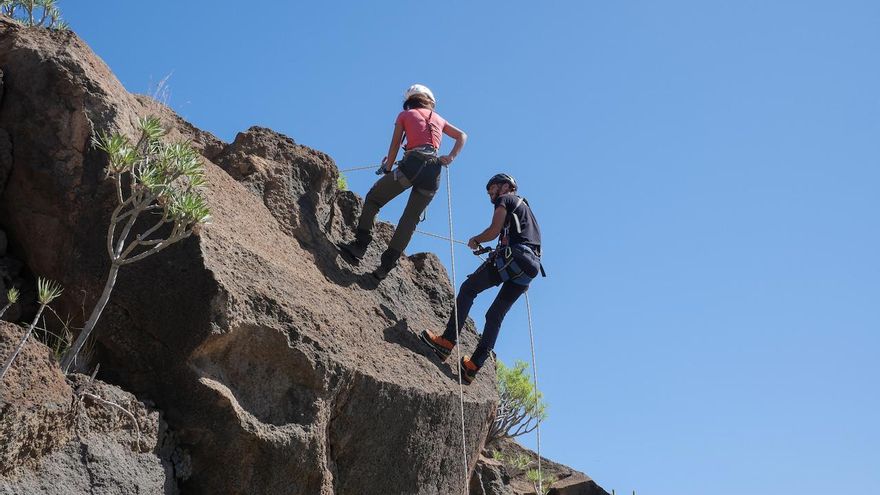
They study the use that the Guanches gave to the hanging caves in Tenerife. The General Directorate of Cultural Heritage has expanded the project of archaeological surveys to be able to identify the possible uses that the Guanche population gave to these cavities that are difficult to access.
In the first phase of this campaign eight caves have been locatedmost of them for burial use, in the municipalities of San Cristóbal de La Laguna, El Rosario and Los Realejos, reports the Canary Islands Government in a note.
The project, directed by the archaeologist Nuria Álvarez and the speleologist Eduardo Díaz, aims to find, study and inventory those caves that preserve relatively intact archaeological features and without plundering from aboriginal times.
It began to develop in 2017 in The Palmwhere the first cave paintings on the island were found in Cueva Tiznada (El Paso).
The large number of caves of difficult access distributed by the orography of Tenerifethe plunder present in the easily accessible deposits, as well as the good results obtained from the work carried out in La Palma, is what has motivated the start of this project on the island of Teide.
The finding of this type deposits in good condition facilitates the interpretation of the ways of life of the ancient Canarians with scientific rigor, as archaeologist Nuria Álvarez clarifies, to “understand how these populations lived and how they died”.
With the development of surface prospecting, new lines of research within Canarian archeology related to the patterns of occupation, the use of the cavities and the accesses used by the pre-Hispanic population to reach these caves located in ravines, cliffs or cliffs.
The works in Tenerife are in a preliminary phase and the idea is that when they have prospected a significant number of caves they can identify possible similarities between different islands.
The caves that specialists have entered so far have mostly a funeral use. Ethnohistorical sources determine that the Guanche population used the caves for residential and funerary purposes.
However, from the archaeological point of view, little is known about the uses of the caves of difficult access sLocated in ravines, on cliff walls or on ridges.
On the recommendation of different institutions in Tenerife, those areas or cavities that they considered their priority research for different reasons were chosen. At the request of Municipality of San Cristobal de La Lagunasurveys were carried out in the surroundings of Becerril with the intention of find the famous necropolis excavated by Luis Diego Cuscoy.
In this environment, the multidisciplinary team located five burial cavities which will be studied in depth soon.
















